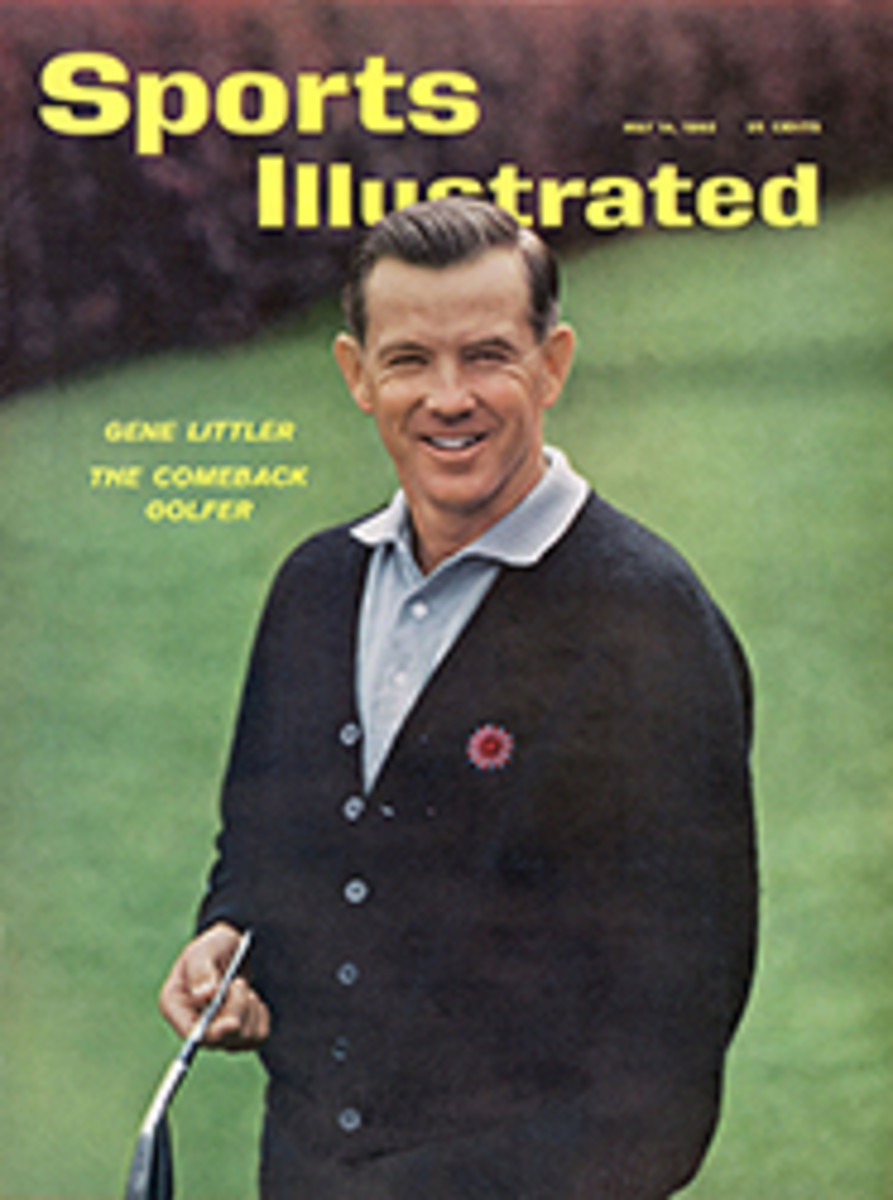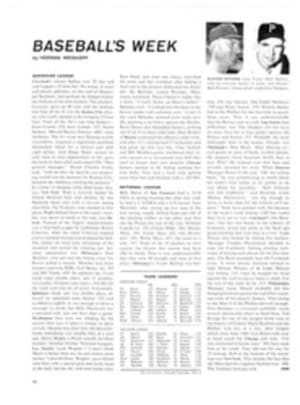
Bloody nose for a boat race
The start of this year's 180-mile Miami-Nassau powerboat race was a mess. The plan was to send off the 48 ocean-racing entries in six evenly spaced rows. The start was to be about 7 a.m. at the end of Government Cut. That was the plan, and at 5:30 a.m. the fastest collection of sea-going powerboats ever assembled began moving across Biscayne Bay to carry it out.
As the boats turned into Government Cut on the final run out toward the start, the six rows formed up and then suddenly began to go ragged. The race committee neglected to enforce any distance specifications between rows, and naturally a few in the ruck began cutting the distance. Then someone on the starter's boat casually dropped the starting flag, and engines roared to top rpm.
The spectators along the MacArthur Causeway danced to dry ground as the wash of the wakes, unheard above the rumble of boats, flopped along the shore. Also unheard along the shore was the splintering of a hull, as a Coast Guard entry, patrol boat No. 30490, slipped down a wave and collided with Jack Manson's X8 Allied GX, a 40-footer. No. 30490 survived the crash but later withdrew from the race with engine trouble. Manson, despite 14 feet of stove-in hull, managed to continue. If the damage had been a foot lower, GX would have sunk in Government Cut. At about the same time Jim Wynne's 25-footer, moving through the jam of boats at some 40 mph, hit the gunwale of an out-of-control rival but managed to get through the rest of the race.
The others began stretching across the still, calm surface of the Gulf Stream. Cat Cay, 44 nautical miles away, was the first check point, and 52 minutes after the start Dave Craig's AOKwynn, first boat to enter the comma-shaped channel running between Gun and Cat Cay, charged into the dock to pick up the necessary papers for Nassau entrance—and then resolutely died of electrical failure. Next came Mechanic Howard Hibbert, through the channel and past the docks; an engine blew, his crankshaft snapped. Four-time winner Sam Griffith, the red hat he wears for luck flapping, coasted into Cat Cay in third place. He banged the dock at 10 miles an hour, grabbed his Nassau papers and gunned away through the shallows of Great Bahama Bank, suddenly in first place. Griffith looked down at the tachometers: 5,000 rpm. He looked over the stern. One boat was in sight, 600 yards behind him, Johnny Bakos' 25-footer, powered by twin 225-hp Mercury engines.
Griffith looked again at his controls: 4,700 rpm. Now Bakos was in his wake coming up slowly. Griffith dropped to 4,500. Ocean water from the cooling system was leaking through a small crack in his port engine block. The gap between the boats dropped to 100 yards, then 100 feet. With 50 feet between them, Griffith called for a can of beer. His co-skipper (and the builder of his boat), Dick Bertram, handed him a Coke. Griffith sipped it, spat it out—"I wanted a beer," he complained—and threw the can over the side. "That was my Coke," Bertram told him. "I was just giving you a sip." "Well, it's gone now," Griffith growled over the wind. Bakos' black-and-white hull slid past. "So's the race," Griffith added. He pulled off the lucky red hat and threw it overboard.
At 36 minutes and 20 seconds after 10 o'clock, to the sound of a cannon from the Nassau Yacht Club, Bakos barged across the finish line. His time: 3 hours, 42 minutes and 20 seconds—38 minutes faster than Griffith's record time last year. For Bakos it was a good victory, but it would have had more meaning had the ocean been rough enough to truly test his boat. For Griffith it was a defeat, but hardly a crushing one. "The breaks of racing," he explained later. "A man does what he has to do; if it don't work out, well there are always other races."
Hopefully, there will be no more races like this one. Despite the chaos, Race Chairman Red Crise saw no reason to change any of the rules. "I don't care how rough it was," he said. "I will not wet-nurse anyone." This completely ignored the fact that the thing to be proved in this race was not who had the sharpest elbows but who had the best seagoing powerboat hull and engine. Then the winner, Johnny Bakos, got himself a mysterious but very visible bloody nose. Visible, that is, until Bakos vanished—first under a security blanket of fellow employees of the Kiekhaefer Corporation, builder of his Mercury engines, and then from the town of Nassau altogether to hole up in the Airliner Motel back in Miami.
Back in Nassau, Carl Kiekhaefer himself suffered the anguish of a corporation president whose engines won, getting him good publicity, but in the end wound up being heavily harassed by the press because of his attempts to wipe a bloody nose. And in all the foolishness probably the biggest bloody nose was suffered by the race itself.
PHOTO
JOHNNY BAKOS SKIMS TO FIRST-PLACE FINISH AT NASSAU

